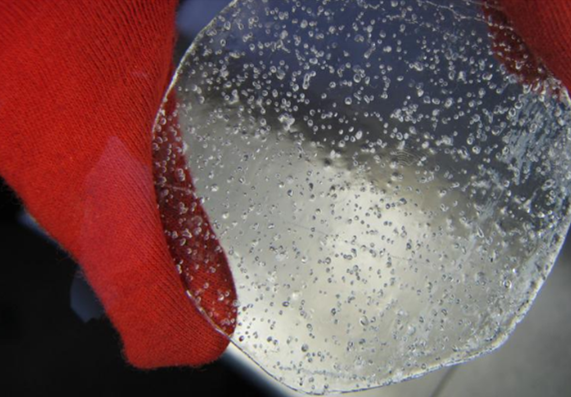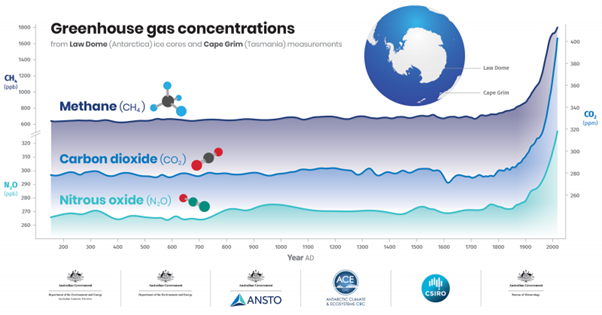St Mary's College Grade 10 A Science

Our Questions
We asked a wetland ecologist, a fire scientist, and a Tasmanian Aboriginal person to answer this question. Their answers may surprise you - because climate change is already affecting Tasmania.
Indigenous perspective
Tasmanian Aboriginal People have been seeing climate change effects for well over 15 years now, we have noticed these effects on our traditional cultural resources such as the marineer shells, Mutton Birds, and dog wood trees/saplings.
Marineer Shells are used in traditional shell necklace making (mental health, connection to country). The shells come in a variety of colours and sizes. They are an iridescent metallic green or blue colour and are often representative of status or valued highly as a trade item, depending on the quality, quantity, and shell variety.
Some of the climate change affects which has been seen on the shells are discoloration, spotted corrosion, thinning of the shell walls, and becoming more brittle because of this. Their numbers are reducing, the water they live in has become more acidic, the weeds they live in and on have reduced in number and coverage per hectare, in some cases being pushed out of the area by other weeds.

Mutton birds are being affected by micro plastics in the water, and the blockages are interfering with their energy levels for their long-haul migrations and breeding cycles. Dog wood (used for making spears and clap sticks) saplings are growing at a faster rate and are being shown to not grow as straight nor with the same internal strength qualities that have been apparent for thousands of years.
Thank you for this excellent question. I am not an expert in genetics and don’t believe that there is currently any evidence of true genetic adaptation to climate change. Authors such as Donna Harraway have speculated about this in works that use writing styles similar to science fiction (e.g her book “Staying with the Trouble”). However at the moment works like this are “thought experiments” which imagine what genetic adaptation might be like, rather than science based on genetic evidence.
There are many other ways that human societies are starting to adapt to our changing climates. Some of this change involves large-scale changes to the way societies live every day, e.g changing our power and transport systems to renewable energy rather than systems reliant on fossil fuels. For example, it’s no mean feat to change our current transport systems from petrol cars to predominantly electric vehicles. However, countries like Aotearoa New Zealand are currently preparing their infrastructure to do just that. This is an example of large-scale adaptation.
In terms of our bodies dealing with extremes in temperature (e.g hotter summers), there are limits to how our bodies can deal with this and still maintain a healthy core temperature. For example if we live in hotter, more humid conditions (e.g higher than 33 degrees Celsius), we would need to be careful to avoid heat exhaustion by drinking more fluids and being careful what time of the day we exert ourselves. Many people in the world already live in very hot places, and generally their housing and lifestyles reflect sensible ways to live in these conditions. It’s possible that some of these ways of life will become more common in other parts of the world if the weather is consistently warmer.
Understanding past climates involves studying naturally occurring archives such as ice cores, tree rings and lake sediments, among others, from around the world including Tasmania and Antarctica. Each of these archives accumulate layers over time. This is similar to the pages of a book, where each page represents a particular period of time and each page tells you something different. Using many different chemical, geological, biological and physical methods, it is possible to reconstruct what the climate was like in the past.

Ice cores can be used to measure past greenhouse gas concentrations, such as carbon dioxide and methane. These gases are trapped in air bubbles in the ice (see photo). Layers of ice can accumulate annually, which means the ice cores trap a record of greenhouse gas concentrations year by year. It is from these concentrations that it is possible to calculate the percentages of different greenhouse gases, including methane. The figure below shows the concentrations of the major greenhouse gases: methane, carbon dioxide and nitrous oxide over the last 2000 years. It is clear that since the 1800s, concentrations have sharply risen and will continue to rise unless we make dramatic changes to reduce emissions.

A great read: Dr Karl’s Little Book of Climate Change Science by Karl Kruszelnicki (2021, ABC Books)













